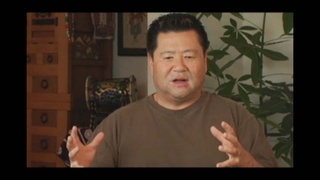Interviews
Originality of each taiko group (Japanese)
(Japanese) I believe every taiko group ought to have its own unique style and originality. It should be based upon its locale. It should be indigenous. For instance, I have played the taiko in Los Angeles. The people who come to me are mostly Nikkei folks. They were born here, eat American foods, breath the air here, and grew up listening to American music. Those elements form the basis and are integral part of these folks.
When I started a Japanese taiko group here, I thought I needed to establish an authentic Japanese base and let the Sanseis build on this. They have their own rhythm and sound that ought to be incorporated to make it indigenous to the locale, I think.
Date: April 1, 2005
Location: California, US
Interviewer: Ann Kaneko
Contributed by: Watase Media Arts Center, Japanese American National Museum.




